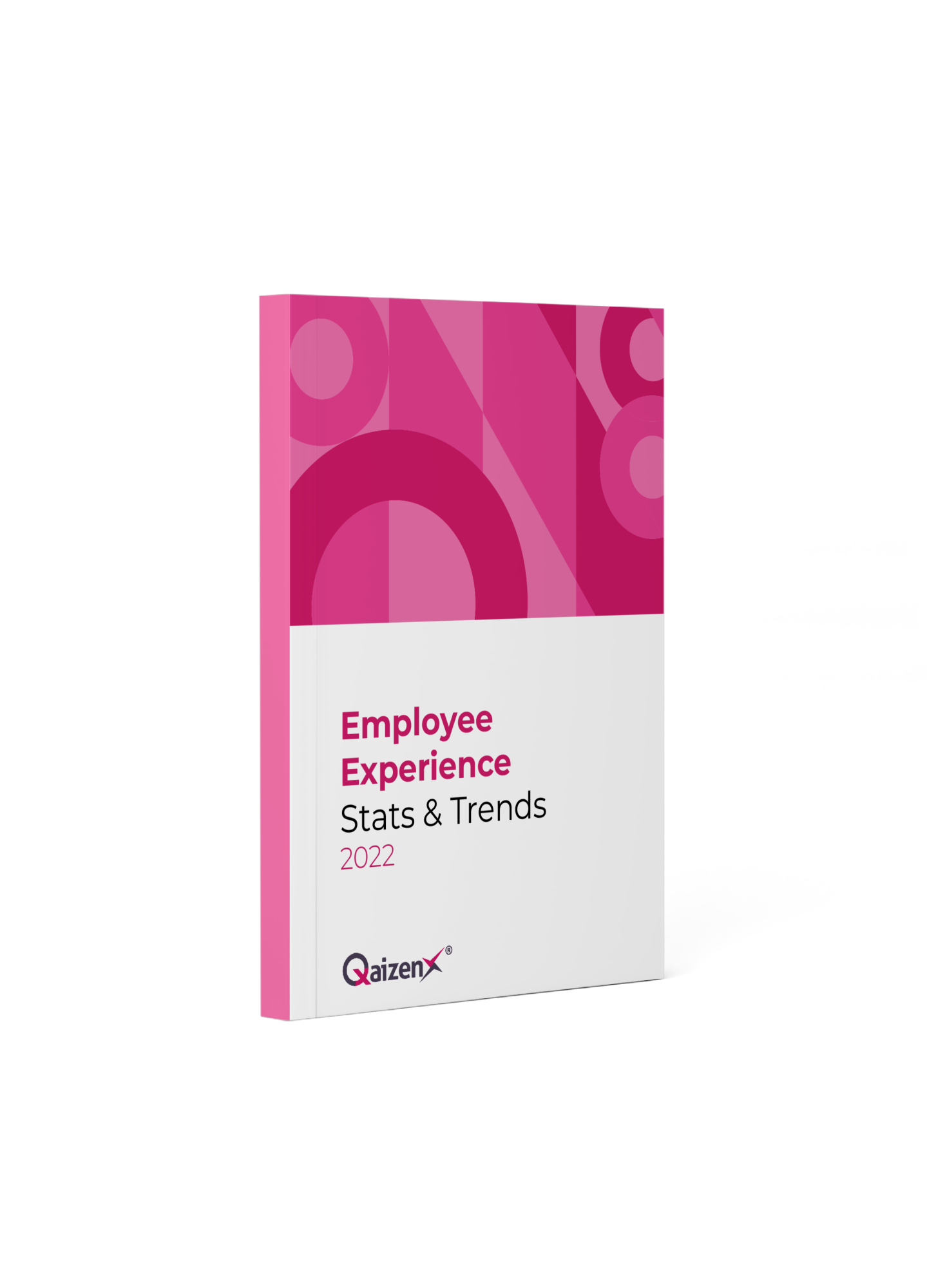Employee Experience Challenges and Solutions to Address Them

“The prevailing factor to drive employee engagement, and therefore create exceptional employee experiences, can be summed up in one word: Impact” – Lior Arussy.
Businesses that assume that everything will return to normal after the global pandemic miss out on opportunities to improve employee engagement, boost productivity, and keep the best employees. Workplace trends are evolving, and it can be challenging to stay up with them. Therefore, it is the responsibility of today’s companies to find and keep talent within their firms.

Employees are interested in knowing that they are heading back to a workplace that aims to keep them healthy. Also, the organization should have safety measures, including touchless check-ins, new air filtration systems at building entrances, conduct employee wellness programs and much more.
Employee Experience
The employee experience is the path an individual undertakes with their respective company. Therefore, Employee Experience (EX) is one of the trendiest topics for HRs, administration, and other strategists. Companies know that improving Employee Experience and putting employees first are the keys to great business results.
However, the changes in the workplace can be difficult to keep up with. Organizations should operate on the belief of engagement, collaboration, and safety to create wonderful employee experiences.

Here are five issues that businesses should overcome if they want to be successful.
1. Utilizing correct technological tools for better employee experience:
One of the major challenges faced by the employee is the lack of technology in the organization. So, businesses that are reluctant to advance their operational tools and stick to the traditional method of working may reduce employee productivity and engagement.
Solutions for providing the right tech:
To keep employees interested and collaborating, you must have the correct technologies in place. For example, spend in group messaging so that employees can interact in real-time no matter where they are, or in cloud-based document sharing and editing to make collaboration easier. Companies may also consider investing in digital employee experience to facilitate a suitable hybrid work mode.
● Device and software performance:
How fast are they? Are they set up in a way that allows staff to execute their jobs?
● Program’s dependability:
Do programs crash? Computers slow down to the point where they need to be rebooted frequently? Do corporate-issued mobile devices smoothly connect to the company VPN?
● Flexibility:
Do the gadgets allow employees to operate efficiently from anywhere?
● Collaboration:
Do programs help employees to collaborate successfully with their team members? Is employee productivity increased by them? Do they contribute to company success?
2. Prioritizing attributes employees value most
Employees value a variety of attributes in an employer, just as a variety of elements come together to make a strong Customer Experience (CX). Our employee engagement study identifies numerous critical aspects that contribute to employee engagement and happiness, such as:
Leadership – Where individuals are valued by their seniors and leaders and their opinions are acknowledged
Empowerment – Where they are trusted to make decisions and assigned with work authority
Development – Finding significant chances for their professional and personal growth.
Additionally, employees are giving more importance to organizational values that are fundamental to the leadership culture, such as the firm’s mission, vision, and diversity, as well as how it handles its clients, the local community, and the environment. It can be challenging to identify the steps to take to increase employee engagement due to the numerous factors at play and the fact that employees’ opinions and expectations change over time as they encounter changes in their roles, responsibilities, and attitude.
How can you prioritize employees’ attributes?
Giving a fair chance to every employee can play a key role in prioritizing their attributes. Studies show that 93% of employees think that being rewarded fairly is important. In addition to this, the development of the employee is also an important attribute.
Here are the five suggestions for putting employee development first:
- Encourage cross-departmental collaboration.
- Make digital learning resources available.
- Ensure enough time for learning.
- Offer chances for development and establish precise standards.
- Provide training opportunities for professionals
3. Defining the measurements that matter
Developing an effective employee experience relies on isolating the metrics that matter. But what are the defining metrics that go into building an accurate picture of employee experience – Satisfaction? Loyalty? Willingness to recommend an employer to other people? The truth is, it’s all of these. The difficulty is that while annual employee surveys and pulse surveys are ideal for capturing a ‘snapshot’ of employee feeling at a certain point in time, a holistic understanding of engagement, and the factors that drive engagement, is needed to make accurate, effective changes.
4. Unorganized employee data = no actionable insight
Organizations that do not emphasize employee data collection fail to provide a good employee experience. In addition, organized data give insights into the effectiveness of HR strategies and the absence of productivity and engagement in employees.
Importance of Organized Employee Data:
Companies frequently utilize a range of strategies to discover and analyze engagement factors, ranging from employee satisfaction surveys to forming cross-functional feedback panels. Despite good intentions, combining various methodologies might result in an unintelligible mass of data and suggestions. It is difficult to draw unified practical insights that will make a difference in the employee experience without a concrete relationship between measures and performance. At last, choose a good employee survey partner to understand employees’ points of view, motivation, and experience with the company.

5. Spread-out strategies
Despite their good intentions, managers and leaders can add bias by implementing non-evidence-based techniques that they feel would improve the employee experience. Aside from diverting resources towards efforts that may or may not succeed, a haphazard, rather than data-driven, strategy can lead to further issues. Implementing a liberal flexible working policy that allows employees to work from home, for example, can have a wide-ranging influence on the employee experience.
Here are the most useful techniques to engage new employees during work from home.
What should be the solution?
A critical beginning point for building a successful EX strategy is rooting it in concrete facts regarding employees’ true desires and requirements, followed by implementing techniques that are realistic and mutually beneficial for employees and businesses. Furthermore, companies may use a questionnaire to gather meaningful employee input at defined checkpoints, enabling them to create and improve interactions that correspond with employee expectations. Furthermore, it aids in achieving a deep knowledge of interpersonal variables like empowerment, faith, and satisfaction.
Final Thoughts
Implementing an excellent EX strategy that enhances employee experience to the point of increasing customer satisfaction and advocacy necessitates the use of a flexible employee experience research approach. Someone capable of determining what employees desire at touchpoints along various end-to-end journeys, whether they are remote employees in training or senior managers who operate in offices.
Our study into the variables that lead to an engaging employee experience resulted to build Employee Experience Quality Analysis. A detailed system that can document an employee’s journey through multiple channels. It also provides relevant insights about each employee segment, recognizing and highlighting their demands at each level. Also, helping the employer to develop a good employee experience according to their needs.
A customized EX survey can also provide detailed information. And identify the hidden gap between employee expectations and their current experience. So, obtaining direct input on all aspects of their job experience allows us to produce an employee survey that focuses on the specific things that employees appreciate the most.
How would you understand your employee experience? A good Quality Analysis solution can improve businesses of all scales. Also, help the top management, and executives to improve the employee experience. QaizenX’s employee research system can measure and monitor employee satisfaction, onboarding journey, performance, engagement, and much more. Get a clear insight into employees’ needs and understand what is crucial and what’s not. It will also provide actionable knowledge about the practices and behaviours that employees desire, in priority order, and how to attain them.
Recent Posts
- 20 Examples Of Employee Feedback In The Workplace
- How to Obtain Valuable Input from Your Audience for Enhanced Product Development (and Increased Sales)
- 4 E’s of Employee Engagement and How To Implement Them
- How To Choose The Right Customer Experience Management Software For Your Business
- Why Customers Leave: Recognizing the Signs and Strategies for Retention



